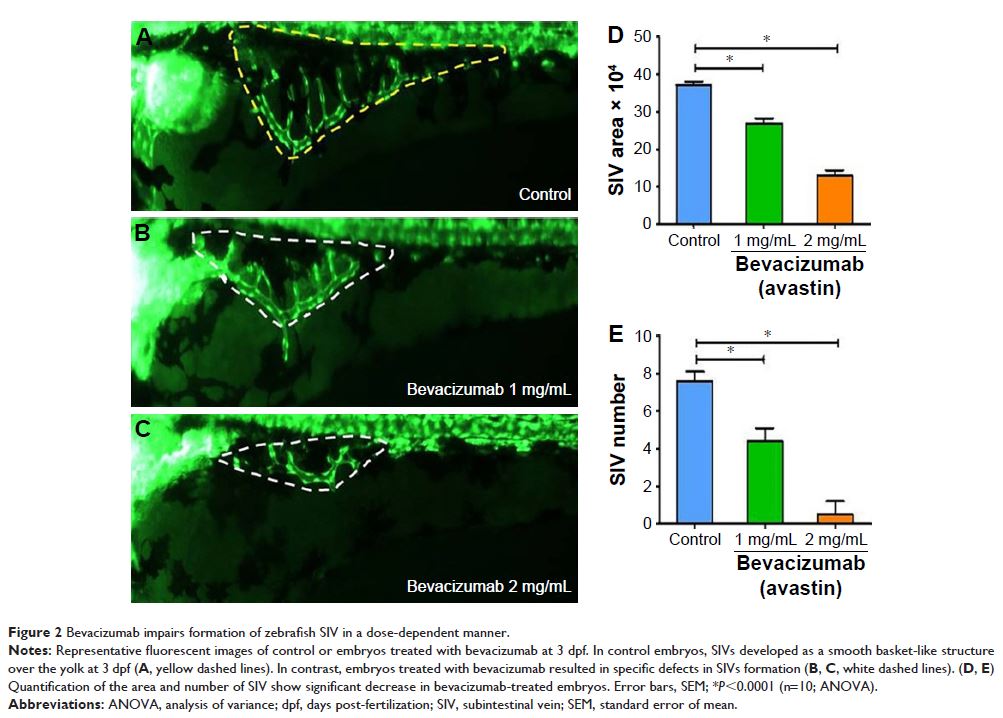108605
论文已发表
注册即可获取德孚的最新动态
IF 收录期刊
- 3.4 Breast Cancer (Dove Med Press)
- 3.2 Clin Epidemiol
- 2.6 Cancer Manag Res
- 2.9 Infect Drug Resist
- 3.7 Clin Interv Aging
- 5.1 Drug Des Dev Ther
- 3.1 Int J Chronic Obstr
- 6.6 Int J Nanomed
- 2.6 Int J Women's Health
- 2.9 Neuropsych Dis Treat
- 2.8 OncoTargets Ther
- 2.0 Patient Prefer Adher
- 2.2 Ther Clin Risk Manag
- 2.5 J Pain Res
- 3.0 Diabet Metab Synd Ob
- 3.2 Psychol Res Behav Ma
- 3.4 Nat Sci Sleep
- 1.8 Pharmgenomics Pers Med
- 2.0 Risk Manag Healthc Policy
- 4.1 J Inflamm Res
- 2.0 Int J Gen Med
- 3.4 J Hepatocell Carcinoma
- 3.0 J Asthma Allergy
- 2.2 Clin Cosmet Investig Dermatol
- 2.4 J Multidiscip Healthc

监测斑马鱼中贝伐单抗的抗血管生成作用
Authors Zhang J, Gao BL, Zhang WC, Qian ZJ, Xiang Y
Received 23 February 2018
Accepted for publication 2 May 2018
Published 6 August 2018 Volume 2018:12 Pages 2423—2430
DOI https://doi.org/10.2147/DDDT.S166330
Checked for plagiarism Yes
Review by Single-blind
Peer reviewers approved by Dr Colin Mak
Peer reviewer comments 2
Editor who approved publication: Dr Anastasios Lymperopoulos
Abstract: Bevacizumab, which is a humanized anti-VEGF antibody, has been
successfully applied in clinics since 2004. Bevacizumab in combination with
chemotherapy showed high safety and has been applied to solid tumors. However,
studies on the insight into the mechanism about the antiangiogenesis activity
of bevacizumab were mostly done on mice models, and so there are no visual and
intuitive models to observe the process of antiangiogenesis. Here, we first
used a zebrafish model to investigate the angiogenesis suppressing behavior of
bevacizumab. Our results showed that bevacizumab inhibited formation of
zebrafish subintestinal veins, which mimics the process of tumor angiogenesis
in vivo. Meanwhile, bevacizumab caused specific vasculature formation defects
in subintestinal veins but not in the trunk. Our study also indicated that
bevacizumab could inhibit zebrafish retinal angiogenesis with therapeutic
potential.
Keywords: zebrafish, bevacizumab, anti-angiogenesis, VEGF, subintestinal
vein
